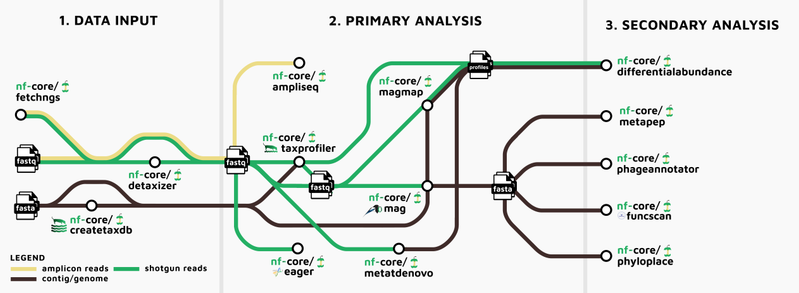Introduction
Meta-omics methods aim to simultaneously analyse the entire multi-species potential and realised functional capacity of a biological sample. In other words to taxonomically and functionally characterise all organisms and their activity in a community.
The initial aims of this interest group will be:
- Helping coordinate compatibility between existing and potential meta-omic nf-core pipelines
- Implementing semi-‘chaining’ of sequential pipelines
- Developing standard parameters for different sub-disciplines (i.e. microbiome analysis) for each pipeline
- Documenting usage of ‘first level’ meta-omic pipelines (createtaxdb, ampliseq, eager, taxprofiler, mag, metatdenovo) followed by complementary analyses with “secondary” pipelines (e.g., funcscan, phageannotator, phyloplace, rnaseq, differentialabundance) etc.

Depending on interest/activity, other potential activities could include:
- Benchmarking meta-omic pipelines using relevant datasets (i.e. CAMI2), or reads generated using #readsimulator
- Adding nf-tests to meta-omic pipelines
- Reducing functional redundancy between pipelines
Activities
Initial activities will involve a monthly meeting with developers and users, to identify the most relevant problems related meta-omics with nf-core pipelines. Future activities may include presentations and discussions from topic-experts, as well as tutorials, workshops, and demo-days of nf-core pipelines.